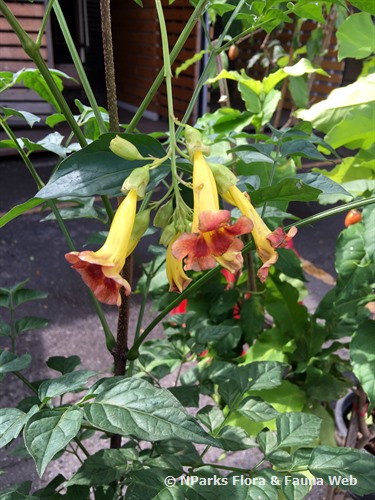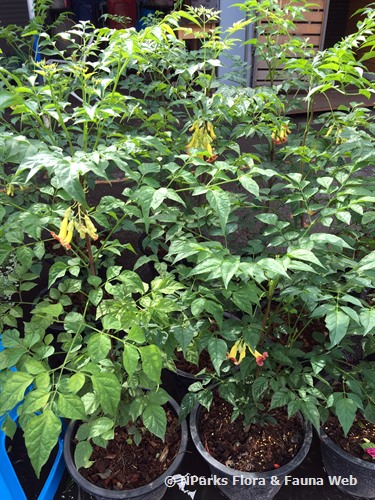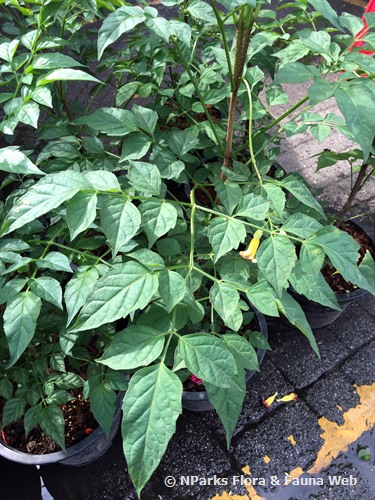
Name
Classifications and Characteristics
| Plant Division | Angiosperms (Flowering Seed Plants) |
|---|---|
| Plant Growth Form | Tree (Shrubby (1m-5m)), Shrub |
| Lifespan (in Singapore) | Perennial |
| Mode of Nutrition | Autotrophic |
| Maximum Height | 6 m |
Biogeography
| Native Distribution | China South-Central, India, Laos, Sri Lanka, Thailand, and Vietnam. |
|---|
Description and Ethnobotany
| Growth Form | A shrub that grows to 1.5 - 2.5 m tall, rarely 6 m. |
|---|---|
| Foliage | Leaves are sparsely pubescent, each leaflet is ovate to lanceolate, with cuneate base and acuminate apex. The leaf blade has entire to toothed margin, and measures 3.7 - 5 cm long and 1.5 - 2.5 cm wide. |
| Stems | Branchlets have lenticels. |
| Flowers | Flowers are borne on clusters called cymose-paniculate, arranged at the terminal. Each flower has semi-rounded, red-brown lobes, with dark yellow tube. |
| Fruit | Fruits are long capsules. |
| Habitat | It is found in evergreen broad-leaved forests, roadsides and slopes. |
Fauna, Pollination and Dispersal
| Fauna Pollination Dispersal Associated Fauna | Bird-Attracting |
|---|
Plant Care and Propagation
| Light Preference | Full Sun, Semi-Shade |
|---|---|
| Water Preference | Moderate Water |
| Plant Growth Rate | Moderate |
Foliar
| Foliage Retention | Evergreen |
|---|---|
| Mature Foliage Colour(s) | Green |
| Mature Foliage Texture(s) | Velvety / Furry / Tomentose |
| Prominent Young Flush Colour(s) | Green |
| Foliar Type | Simple / Unifoliate |
| Foliar Attachment to Stem | Petiolate |
| Foliar Shape(s) | Non-Palm Foliage (Ovate, Lanceolate) |
| Foliar Venation | Pinnate / Net |
| Foliar Margin | Entire, Serrate / Toothed |
| Foliar Apex - Tip | Acuminate |
| Foliar Base | Cuneate |
Floral (Angiosperm)
| Flower Colour(s) | Brown, Red, Yellow / Golden |
|---|---|
| Flower Texture(s) | Smooth |
| Flower Grouping | Cluster / Inflorescence |
| Flower Location | Terminal |
| Flower Symmetry | Bilateral |
| Individual Flower Shape | Tubular |
Image Repository
Others
| Master ID | 33743 |
|---|---|
| Species ID | 8157 |
| Flora Disclaimer | The information in this website has been compiled from reliable sources, such as reference works on medicinal plants. It is not a substitute for medical advice or treatment and NParks does not purport to provide any medical advice. Readers should always consult his/her physician before using or consuming a plant for medicinal purposes. |



